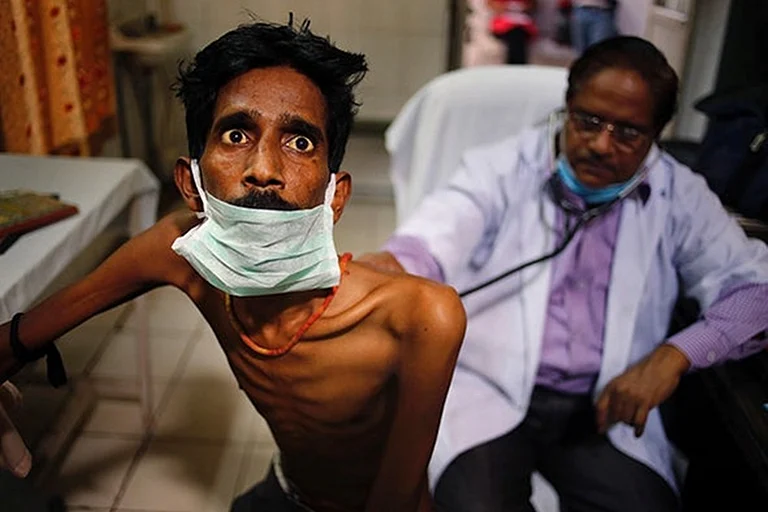A new study published in BMJ Global Health has raised alarm over the risk of chikungunya in India, estimating that around 5.1 million people could be affected by the mosquito-borne viral disease each year.
Chikungunya is known to cause severe joint pain and long-term disabilities in many survivors. The study further suggests that infections could spread beyond currently affected areas, potentially putting 12.1 million people in India and 34.9 million worldwide at risk annually.
Led by researchers from the London School of Hygiene & Tropical Medicine (LSHTM), the study is the first to use machine learning to predict the global burden of chikungunya. The model combines existing data on chikungunya infections with various factors influencing transmission risk, such as the presence of Aedes aegypti and Aedes albopictus mosquitoes, temperature and precipitation patterns, environmental suitability, and national GDP.
This comprehensive mapping reveals that chikungunya's threat extends far beyond tropical zones, underscoring an urgent need for targeted prevention and vaccination programs. Currently, there are no specific antiviral treatments for chikungunya; supportive care remains the only option. This emerging threat poses a serious challenge for India’s healthcare system and public health planning.
The study, a collaborative effort involving LSHTM, Nagasaki University, and the International Vaccine Institute in Seoul, also identified age groups and geographic areas most vulnerable to long-term effects, aiding in the prioritization of vaccine distribution. Besides India, Brazil and Indonesia are projected to face significant long-term impacts, with India and Brazil together accounting for nearly half of the global disease burden. Chronic disabilities, such as persistent joint pain, are expected to account for more than half of the disease burden.
Chikungunya has been a growing public health concern since its re-emergence in 2004, with outbreaks reported in over 114 countries. Spread by Aedes aegypti and Aedes albopictus mosquitoes—commonly known as yellow fever and tiger mosquitoes—the virus causes high fever (often over 39℃) and debilitating joint pain. While most patients recover from the initial infection within weeks, over 50% experience long-term joint pain and disability. Fatalities are rare but possible. Two preventive vaccines, Ixchiq® and Vimkunya®, have been approved for use in some countries.
Previous estimates of chikungunya burden often relied solely on surveillance and outbreak reports, which underestimate the true case numbers. This new model predicts that, on average, 1.2–1.3% of people at risk may become infected annually—a lower risk compared to dengue (6%) but with certain countries, such as Gabon, facing infection rates as high as 11%.
The study also found that chronic illness from chikungunya affects mostly people aged 40 to 60, while children under 10 and adults over 80 are most vulnerable to acute illness.
Hyolim Kang, who led the study as part of her PhD at the London School of Hygiene & Tropical Medicine (LSHTM), and who is also a Research Fellow at Nagasaki University, said: “It’s been widely thought that mosquitoes carrying chikungunya would be confined to subtropical or tropical continents, but our analysis has found that the risk extends way beyond these regions.
Prevention of the spread of this disease is important for everyone. There are no specific antiviral therapies for chikungunya and treatment relies solely on supportive care. Not only are infections extremely painful, even the healthiest of people can be infected and left with life-long disability.”
Sushant Sahastrabuddhe, Associate Director General of Innovation, Initiatives, and Enterprise Development at the International Vaccine Institute , and co-author of the study, said: “The potential spread of vectors carrying viruses like chikungunya won’t wait for us to carry out years of research, so it’s been extremely important to us that the modelling we’re working on is shared and used in real time to help public health professionals manage current cases and prepare for the future.”
The disease causes sudden high fever, joint pain, fatigue, and rashes. While it is rarely fatal, chikungunya can lead to long-term joint problems, especially in older adults and those with pre-existing health conditions.


























